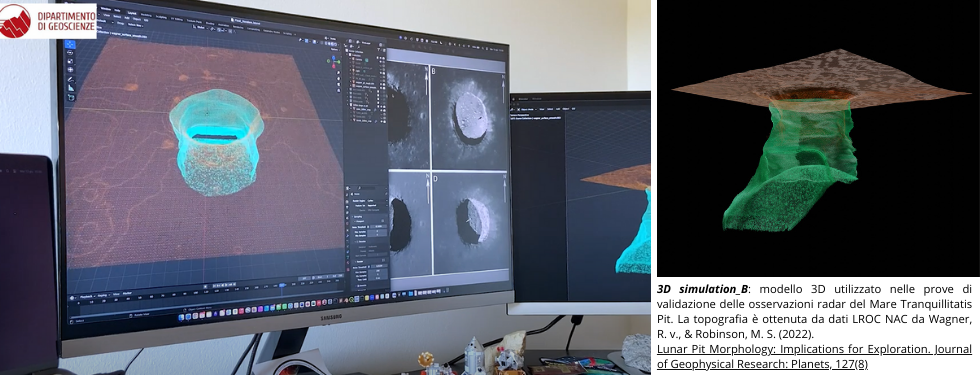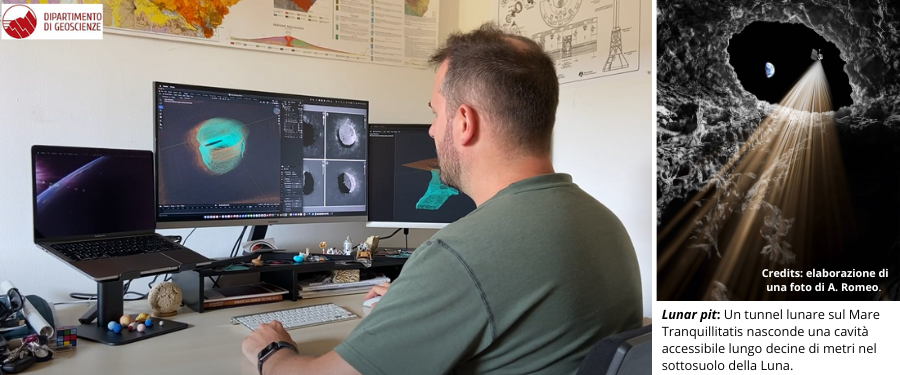A Cave Conduit on the Moon, below the Mare Tranquillitatis Pit

Collapse pits and skylights characterized by vertical overhanging walls were first identified on the lunar surface in 2009. This discovery prompted scientists to speculate about the possibility of these pits leading to caves that could potentially be utilized as protective shelters, suitable for future human settlements.
A study recently published in Nature Astronomy and carried out by an international team of researchers, led by the University of Trento, was able to demonstrate, for the first time with a direct observation, that huge accessible caves exist below the surface of the Moon.
The researchers have observed an empty cave conduit, interpreted as a potential lava tube that provides a means of deep access to the lunar subsurface through a collapse known as Mare Tranquillitatis Pit. This collapse is located within the basaltic basin of the same name.
The direct observation was made possible using an innovative radar image processing technique that can see through darkness. This method was applied to radar data collected by the Mini-RF radar sensor currently orbiting the Moon.
Riccardo Pozzobon, a researcher in planetary geology at the Department of Geosciences of the University of Padua, and an expert in satellite remote sensing of planetary surfaces and terrestrial analogues, provided geological expertise for these volcanic structures. He specifically validated the data obtained from the MiniRF radar to ensure a credible geological interpretation.
“Naturally, we were extremely impressed by these results and felt it was important to verify them. To achieve this, we recreated a model to represent the geometry of the cave conduit.
To do this, we used the surface of the Moon and the visible Mare Tranquillitatis pit as a reference, which had been reconstructed using stereophotogrammetry from satellite images from LROC. Through this process, we create a 3D simulation of the geometry of the cave, including the vertical pit and a potential extension below the surface. Multiple models were created, and using a ray tracing simulator, we modified the geometry of the model. This allowed us to simulate the radar beam, which would penetrate the surface through an aperture and then bounce back. By doing so, we matched the output of the radar simulations with the real observed data taken on the surface of the Moon”, Dr. Riccardo Pozzobon explains.
“We do not have information on the exact width of the cave. We know that it ranges from a minimum of 55-60 meters but can arrive up to several hundred meters or even more” Dr. Pozzobon says. Additionally, the researcher of the Department of Geosciences highlights the reasons for the current widespread interest in these structures among space agencies>The pits or caves could protect from cosmic rays, solar radiation, and micrometeorites and by doing that they could be a solution to deal with the harsh conditions of the lunar surface.
"Potentially, the lunar caves could be utilized for establishing human outposts, storage, and conducting detailed studies on the volcanic and thermal history of our satellite, making it both strategically important for exploration and logistics, as well as offering significant scientific potential”, Dr. Pozzobon says.

Link alla ricerca: https://www.nature.com/articles/s41550-024-02302-y
Title: “Radar Evidence of an Accessible Cave Conduit below the Mare Tranquillitatis Pit” - «Nature Astronomy» 2024
Authors: Lorenzo Bruzzone e Leonardo Carrer (University of Trento); Riccardo Pozzobon (University of Padua, La Venta Geographic Explorations APS); Francesco Sauro (La Venta Geographic Exploration APS, Treviso), Davide Castelletti (Capella Space Corporation, CA, USA); Gerald Wesley Patterson (Johns Hopkins University Applied Physics Laboratory, Laurel, MD, USA).
Shooting and editing video by Barbara Paknazar





